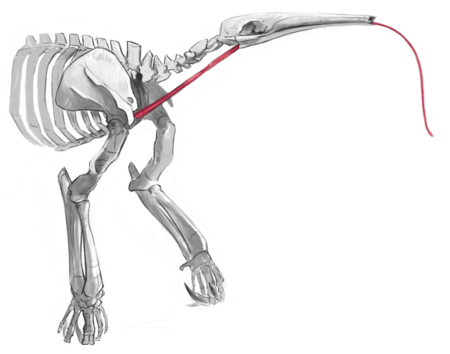Giant anteater
Myrmecophaga tridactyla
![anteater [Translate to English:] Ein Ameisenbär im Tierpark Hellabrunn.](/fileadmin/_processed_/4/8/csm_ameisenbaer-tierpark-hellabrunn-amerika-tierlexikon_55ece37358.jpg)
- FamilyAnteaters (Myrmecophagidae)
- Weight28 – 42 kg
- HabitatMarshlands, forests, grasslands
Crazy about ants
Anteaters use their powerful foreclaws to tear an opening into an ant or termite hill and insert their long, sticky tongue to collect the insects, eggs and larvae. The tongue, which they can stick out 60 cm, has to work quickly – flickering in and out up to 150 times per minute – before the soldier ants begin to fight back with painful stings. An anteater can consume several thousand ants in just minutes.

Peculiar appearance
The giant anteater is unique in appearance with a particularly elongated head and snout up to 45 cm in length and a bushy tail that is almost as long as its body. It has small eyes and ears, and a tiny mouth. The anteater has no teeth, but swallows its food whole.
The interval between births is 9 months or longer. Females give birth to a single offspring. Twins are rare.
Distribution


Hellabrunn Zoo participates in the European Endangered Species Programmes